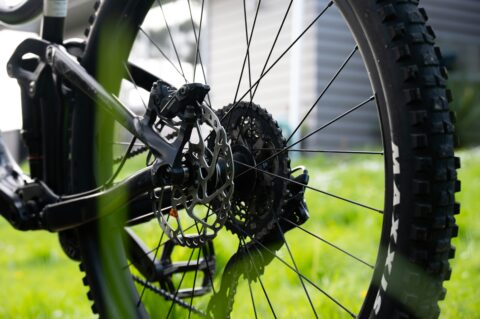Introduction to the evolution of transportation
Buckle up, history buffs and transportation enthusiasts – we’re about to embark on an exhilarating journey through the evolution of transportation! From the humble beginnings of horse carriages and waterways to the futuristic possibilities of hyperloops and self-driving cars, our world has witnessed remarkable advancements in how we get from point A to point B. So fasten your seatbelts (or hold onto your hats if you prefer a vintage vibe) as we take a thrilling ride through time, exploring how transportation has shaped societies and transformed our lives. Get ready for a captivating adventure that will leave you marveling at humanity’s ingenuity and pondering what lies ahead on this ever-evolving road of progress. Let’s hit the gas pedal (metaphorically speaking), shall we?
Early forms of transportation: Horse carriages, waterways, and railways
Picture this: a time when the only way to travel long distances was on the back of a horse-drawn carriage. It may seem like another world compared to our fast-paced, high-tech society, but it wasn’t that long ago.
In those early days, horse carriages were the primary mode of transportation for both people and goods. They provided an essential link between towns and cities, allowing trade to flourish and connecting communities in ways never before possible.
But as societies grew and expanded, so did their need for more efficient transportation methods. That’s when waterways emerged as crucial arteries of commerce. Rivers and canals became lifelines for transporting heavy goods over long distances using barges or boats pulled by horses.
Then came the game-changer: railways. These iron tracks revolutionized transportation by enabling faster speeds and greater carrying capacities than ever before imagined. Suddenly, travel times were cut dramatically, opening up opportunities for exploration and economic growth on an unprecedented scale.
The advent of railways also led to new industries such as coal mining and steel production which further fueled progress in other sectors like manufacturing and construction.
The development of these early forms of transportation laid down the groundwork for future innovations that would shape our world today. Without them, we wouldn’t have had the solid foundation necessary to propel us forward into the age of automobiles, airplanes, hyperloops, or self-driving cars.
So let’s take a moment to appreciate how far we’ve come from those humble beginnings – from relying solely on horsepower to harnessing steam power; from traversing rivers with ease thanks to canals; from riding horse-drawn carriages along bumpy roads to gliding smoothly on iron rails at incredible speeds.
Early forms of transportation set in motion a chain reaction that has forever changed humanity’s ability to connect with one another across vast distances – something we often take for granted in our modern lives.
The invention of automobiles and the impact on society
The invention of automobiles marked a revolutionary turning point in the history of transportation. With their ability to travel at greater speeds and cover longer distances, cars quickly became a symbol of freedom and independence for individuals around the world.
Gone were the days when people had to rely on horse-drawn carriages or public transportation systems. Now, anyone with access to a car could go wherever they pleased, whenever they wanted. This newfound mobility transformed society in countless ways.
For one, it allowed for the rapid expansion of cities as suburban areas became more accessible. People no longer needed to live close to their workplaces or city centers; they could commute from farther away and enjoy a higher quality of life outside crowded urban areas.
Cars also revolutionized industries such as tourism and commerce. Traveling long distances was no longer an arduous journey but rather an enjoyable experience. The rise of road trips and family vacations became possible thanks to automobiles.
However, along with these benefits came some challenges. The increase in automobile ownership led to traffic congestion, air pollution, and concerns about safety on the roads. Governments had to implement regulations and invest in infrastructure improvements to address these issues.
Despite these challenges, there is no denying that automobiles have left an indelible mark on society. They have shaped our culture, influenced our lifestyles, and connected people like never before. From classic vintage models adored by collectors to cutting-edge electric vehicles pushing boundaries in sustainability – cars continue to evolve alongside us.
As we look forward into the future of transportation, it’s clear that automobiles will play a crucial role in shaping how we move from place to place. Whether through advancements in electric vehicle technology or the development of self-driving cars – one thing is certain: our love affair with automobiles shows no signs of slowing down anytime soon!
Advancements in air travel: From the Wright Brothers to commercial airlines
Advancements in air travel have revolutionized the way we explore and connect with the world. From the humble beginnings of the Wright Brothers to the massive commercial airlines that now dominate our skies, it’s been an incredible journey.
The Wright Brothers, Orville and Wilbur, are credited with inventing and building the world’s first successful airplane. Their groundbreaking flight in 1903 paved the way for further developments in aviation technology. Over time, aircraft became more efficient, capable of carrying more passengers and flying longer distances.
In the early days of air travel, planes were a luxury reserved for only a few adventurous souls. However, as technology improved and costs lowered, commercial airlines began to emerge. The introduction of jet engines in the 1950s made air travel faster and more accessible than ever before.
Today, we can hop on a plane and be halfway across the world within hours. Commercial airlines offer a wide range of amenities to make our journeys comfortable – from spacious seating arrangements to in-flight entertainment systems. Airports have also evolved to accommodate increased passenger traffic with state-of-the-art facilities.
With advancements such as supersonic jets currently being developed by companies like Boom Supersonic,
the future of air travel holds even greater possibilities. Faster flights could shrink long-distance travel times significantly while reducing carbon emissions.
As society continues to demand faster transportation options over longer distances,
it is likely that air travel will continue evolving at an accelerated pace.
Who knows what exciting innovations await us in years to come? Only time will tell!
The rise of public transportation systems
The rise of public transportation systems has revolutionized the way we travel and commute. In bustling cities around the world, people rely on these networks to navigate their daily lives. From buses and trams to subways and trains, these modes of transport have become essential in connecting communities.
One of the earliest forms of public transportation was the horse-drawn omnibus, which made its debut in London in 1829. This innovation allowed multiple passengers to travel together, marking a significant shift from private carriages. Over time, horse-drawn vehicles gave way to electric trams and trolleybuses, providing more efficient options for urban mobility.
The advent of steam-powered locomotives further expanded public transportation options. Railways became an integral part of intercity travel, allowing people to journey across vast distances with speed and convenience. The construction of underground subway systems soon followed suit, making it easier for city dwellers to move around quickly without congesting surface streets.
In recent years, there has been a renewed focus on sustainable means of public transportation. Many cities have implemented comprehensive bus rapid transit (BRT) systems that prioritize efficiency while minimizing environmental impact. Additionally, light rail networks have gained popularity as they provide a comfortable alternative to overcrowded roads.
Technology continues to shape the future development of public transportation systems. Integration with mobile apps allows commuters real-time information about routes, schedules, and delays. Some cities are also experimenting with autonomous buses and electric-powered fleets as part of their commitment towards greener solutions.
Public transportation plays a crucial role in reducing traffic congestion and air pollution while promoting accessibility and social equity within urban areas. As our world becomes increasingly interconnected and environmentally conscious, we can expect continued investment in innovative solutions that make commuting more sustainable for all.
Modern innovations: Hyperloops and self-driving cars
Modern innovations in transportation continue to push the boundaries of what was once thought possible. Two exciting developments that are capturing the imagination of people around the world are hyperloops and self-driving cars.
Hyperloops, proposed by entrepreneur Elon Musk, envision a new mode of high-speed transport that could revolutionize long-distance travel. These futuristic systems would use vacuum-sealed tubes to propel pods at incredible speeds, reducing travel time significantly. Imagine being able to commute from one city to another in a matter of minutes!
Self-driving cars, on the other hand, promise to transform our daily commutes and make them safer and more efficient. These vehicles rely on advanced sensors and artificial intelligence algorithms to navigate roads without human intervention. With self-driving cars, traffic congestion could become a thing of the past as these vehicles communicate with each other to optimize routes and avoid accidents.
Both hyperloops and self-driving cars have their challenges but hold immense potential for transforming how we move from point A to point B. However, before these technologies become widespread realities, there are still many hurdles to overcome regarding safety regulations, infrastructure development, and public acceptance.
Nonetheless, it’s fascinating to think about what our future transportation systems might look like if hyperloops connect cities across continents or if self-driving cars dominate urban streets. The possibilities seem endless! As technology continues advancing at an exponential rate, who knows what breakthroughs we’ll witness next?
The future of transportation and its potential effects on our world
As we look towards the future, it’s clear that transportation will continue to play a crucial role in shaping our world. The advancements we’ve witnessed throughout history have revolutionized the way we travel and connect with one another. And there’s no doubt that more exciting developments are on the horizon.
One of the most anticipated innovations is the rise of autonomous vehicles or self-driving cars. With continued investment and research in this field, we can expect safer roads, reduced traffic congestion, and increased accessibility for those who may not be able to drive themselves.
Another groundbreaking concept that has gained attention is hyperloop technology. These high-speed transportation systems have the potential to transform long-distance travel by propelling passengers through vacuum-sealed tubes at incredible speeds. Imagine being able to go from one city to another in a fraction of the time it currently takes!
Furthermore, transportation innovations are not only focused on improving efficiency but also sustainability. Electric vehicles are becoming increasingly popular as people seek greener alternatives to traditional gasoline-powered cars. With advancements in battery technology and charging infrastructure, electric vehicles could become even more widespread in the coming years.
Additionally, alternative modes of transport such as bikes and scooters are gaining popularity as cities strive to create more sustainable urban environments. Bike-sharing programs and dedicated lanes for cyclists aim to reduce pollution levels while promoting healthier lifestyles.
The future of transportation holds great promise but also poses challenges that need careful consideration. As new technologies emerge, issues related to privacy, cybersecurity, and job displacement must be addressed proactively.
It’s undeniable that transportation has come a long way since horse carriages ruled the streets. From waterways and railways to automobiles and airplanes – each era has left an indelible mark on human civilization.
As we embark on this journey into an era where hyperloops might whisk us across continents within minutes or self-driving cars navigate our cities effortlessly – let us remember how far we’ve come thanks to human ingenuity and a never-ending quest for progress.
So, buckle up! The future of







